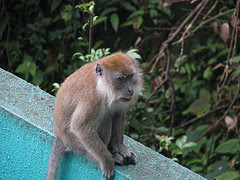Ixora coccinea, known as the Jungle Geranium, Flame of the Woods, and Jungle Flame, is a common flowering shrub native to Asia. Its name derives from an Indian deity. Although there are some 400 species in the genus Ixora, only a handful are commonly cultivated, and the common name, Ixora, is usually used for I. coccinea.
I. coccinea is a dense, multi-branched evergreen shrub, commonly 4-6 ft (1.2-2 m) in height, but capable of reaching up to 12 ft (3.6 m) high. It has a rounded form, with a spread that may exceed its height. The glossy, leathery, oblong leaves are about 4 in (10 cm) long, with entire margins, and are carried in opposite pairs or whorled on the stems.




Pink Ixora, Yellow Ixora, Red Ixora, Orange Ixora
Small tubular, scarlet flowers in dense rounded clusters 2-5 in (5-13 cm) across are produced almost all year long. There are numerous named cultivars differing in flower colour (yellow, pink, orange) and plant size. Several popular cultivars are dwarfs, usually staying under 3 ft (1 m) in height. Ixora 'Nora Grant' is a popular dwarf and 'Super King' is a popular hybrid with much larger flower clusters than the species.
I. coccinea is native to tropical south-east Asia, including Southern India and Sri Lanka. It has become one of the most popular flowering shrubs in South Florida gardens and landscapes.
Ixora is also known as "Santan" in Malaysia and Philippines.
Click for more Ixora photo gallery.
Technorati Tags: Ixora, Santan, Flame of the Woods, Jungle Flame

















































